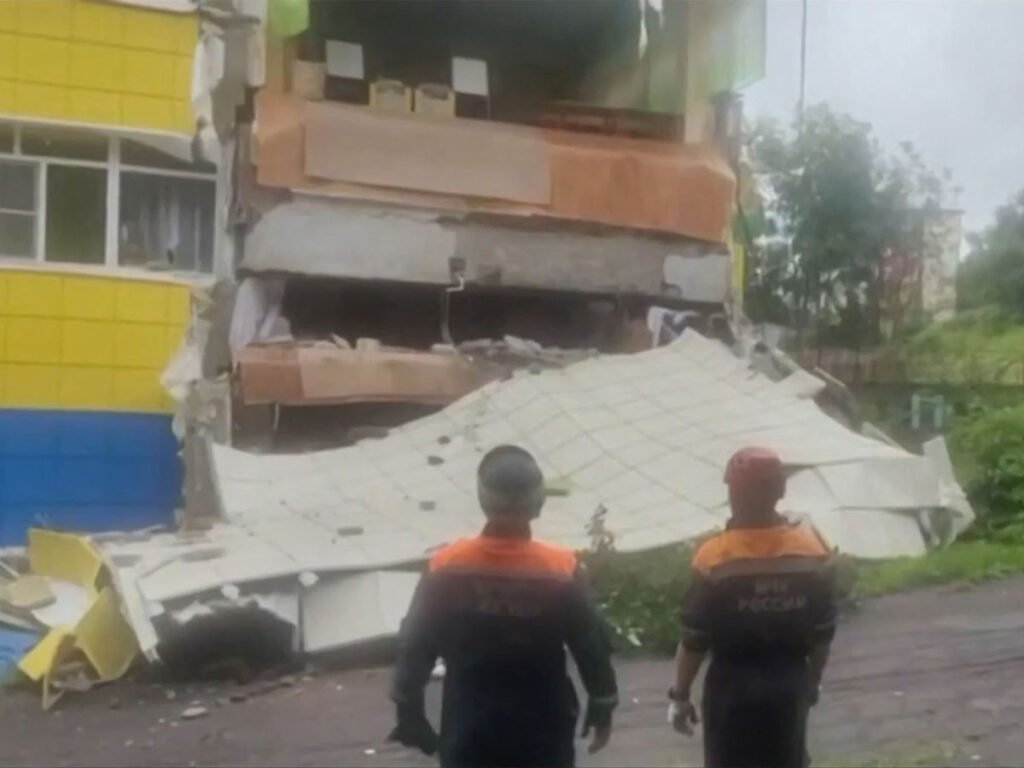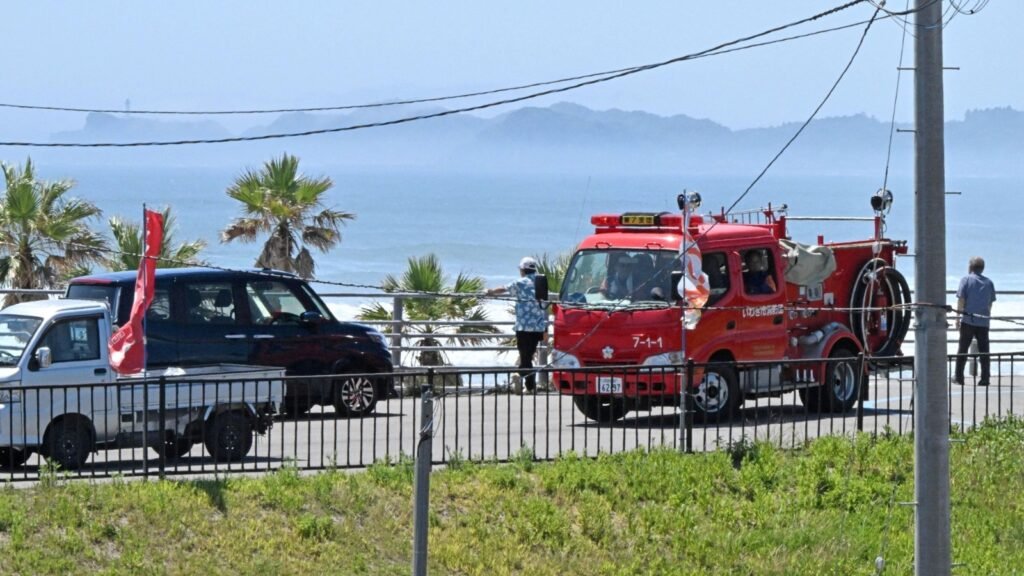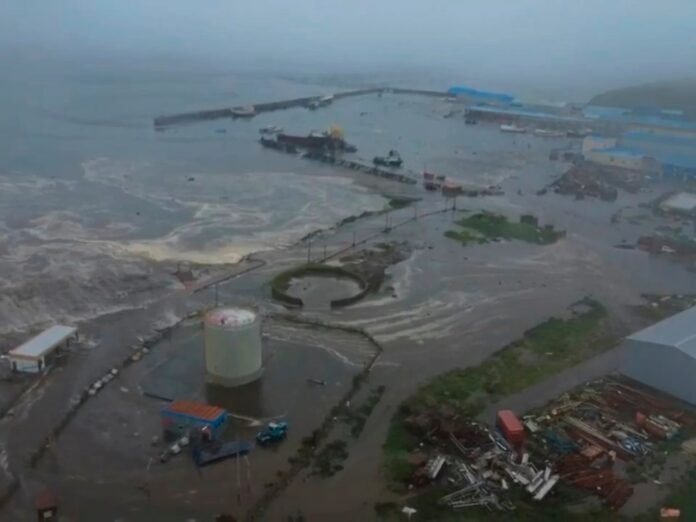Kamchatka, Russia – An 8.8-magnitude earthquake struck off the Kamchatka Peninsula in Russia’s far east on Wednesday, damaging buildings and triggering a tsunami as high as four meters (13 feet), prompting warnings and evacuations across the Pacific Ocean.
Several people were injured in the remote Russian region, while orders were issued to evacuate most of Japan’s eastern coast, which was devastated by a strong earthquake and tsunami in 2011.
“Today’s earthquake was dangerous and the strongest earthquake in decades,” Kamchatka Governor Vladimir Solodov said in a video posted on the messaging app Telegram.
Regional Emergencies Minister Sergei Lebedev said a tsunami between 3 and 4 meters (10-13 feet) high had been recorded in parts of Kamchatka, and urged people to stay away from the beach.
The U.S. Geological Survey reported that the earthquake was shallow at a depth of 19.3 kilometers (12 miles), and its epicenter was 119 kilometers (74 miles) east-southeast of the city of Petropavlovsk-Kamchatsky, which has a population of 165,000. The agency revised its previous estimate of the earthquake from 8.0 magnitude, and reported a strong aftershock of magnitude 6.9 shortly thereafter.
The Japan Meteorological Agency has lifted its warnings, saying it expects tsunamis up to three meters (10 feet) high to reach large areas of its coast.
Tsunami sirens sounded in coastal towns along Japan’s Pacific coast, and authorities urged people to seek higher ground.
Footage broadcast by NHK showed dozens of people on the northern island of Hokkaido on the roof of a building, taking shelter under tents from the scorching sun, while fishing boats left ports to avoid possible damage from incoming waves.
Tokyo Electric Power Company said workers evacuated the stricken Fukushima nuclear plant, where the collapse that followed the 2011 tsunami caused a radiation disaster.
Japanese Chief Cabinet Secretary Yoshimasa Hayashi said that no injuries or damage have been reported so far, and there have been no violations at any of the nuclear power plants.

Trans-pacific Warnings
The US tsunami warning system issued a warning of “dangerous tsunamis” over the next three hours.
The agency indicated the possibility of waves exceeding three meters in height arriving along some coasts of Russia and Ecuador, while waves ranging between one and three meters in height are likely to arrive in Japan, Hawaii, Chile and the Solomon Islands. Smaller waves are also likely to arrive along the coasts of most parts of the Pacific Ocean, including the west coast of the United States.
“Due to a massive earthquake in the Pacific Ocean, a tsunami warning has been issued for those living in Hawaii,” US President Donald Trump said in a social media post.
A tsunami warning has been issued for Alaska and the Pacific coast of the United States. Japan is also about to issue similar warnings
Hawaii ordered the evacuation of some coastal areas. “Take action! Devastating tsunamis are expected.
Hawaii’s warning urged low-lying residents to move to higher ground or to the fourth floor of the building.
Petropavlovsk resident Kamchatsky said the tremor started slowly but intensified and lasted for several minutes.
“Given her strength and how long she has held out… “I decided to leave the building,” said Yaroslav, 25.
The building was fragile and lightweight, which may have been the reason for its survival. But I felt as if its walls could collapse at any moment. The vibration continued for at least three minutes.
Regional Health Minister Oleg Melnikov told Russia’s state-run TASS news agency that several people had sought medical help following the quake.
Unfortunately, some people were injured during the earthquake. Some of them were injured while running outside, and one patient jumped out of the window. A woman was also injured inside the new airport building, Melnikov said.
The Russian Ministry of Emergency Services announced via Telegram that the port of Severo-Kurilsk in Sakhalin and a fish processing plant there were partially submerged by the tsunami. Residents were evacuated.
The ministry added that a kindergarten was also damaged, but most buildings withstood the earthquake and there were no reports of serious injuries or deaths.

“Ring of Fire”
Kamchatka and the Far East of Russia are located on the Pacific Ring of Fire, a geologically active region prone to earthquakes and volcanic eruptions.
The Russian Academy of Sciences said that this earthquake is the strongest to hit the region since 1952.
“However, due to certain characteristics of the epicenter, the intensity of the vibration was not high… As one might expect from such a size.”
Aftershocks are currently ongoing. Its intensity will remain relatively high. However, stronger tremors are not expected in the near future. The situation is under control.










